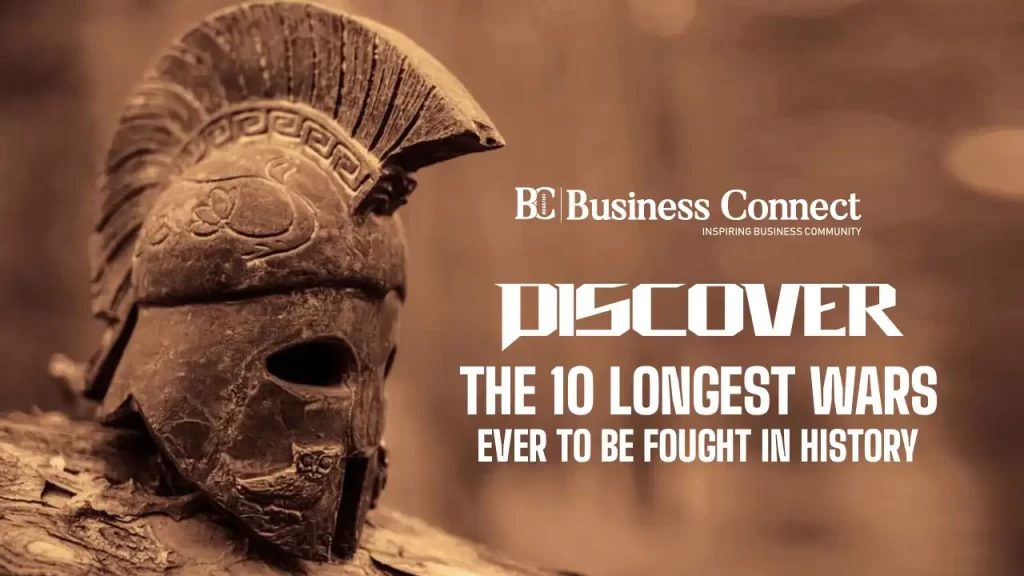Discover The 10 Longest Wars Ever To Be Fought In History
-by Jaya Pathak
Throughout human history, battles and wars have been a tough part of life. Different countries have fought with each other, shaping how the world looks today. Some of these fights lasted for a really, really long time, leaving a lasting impact even after the fighters are gone. In this journey through history, we’ll explore some of the longest wars and conflicts that have left a mark on the world.
To understand why tensions exist today, we need to dig into who started these old fights, why they began, what happened during them, and most importantly, when these wars finally ended. Learning about these age-old struggles is like giving ourselves a lesson on how to avoid violence in the future. It’s all about knowing our history to make a better world ahead.
Reconquista – 781 Years

The Reconquista, a prolonged struggle lasting 781 years, saw Spanish and Portuguese forces contesting Muslim rulers in the Iberian Peninsula. Starting around 711 CE, an Islamic-Berber army crossed the Strait of Gibraltar, seizing control of Spain and Portugal. By 718 CE, the Moors held much of Iberia, subduing Christian Kingdoms under the Cordoban Caliphate until its disintegration in the 11th century. Subsequently, Christian kingdoms resurged, gradually gaining dominance.
Throughout the Reconquista, battles fluctuated, with victories and defeats on both sides. However, in 1492 CE, Granada, located in present-day southern Andalusia, fell to Ferdinand II and Isabella I, marking the end of Muslim rule and one of history’s longest wars. This victory heralded a new era for Iberia, characterized by Catholic Christianity and the Renaissance.
The Reconquista’s legacy is complex, with the term itself coined in the 19th century, symbolizing the restoration of the Visigothic Kingdom. Nevertheless, contemporary scholars challenge its continuity, emphasizing periods of coexistence and alliances between Christians and Muslims. The Crusades also influenced perceptions of a Christian reconquest, while in the 19th and 20th centuries, the Reconquista became entwined with Spanish nationalism, notably during the Francoist dictatorship, sparking historical and ideological debates in modern contexts.
Roman-Germanic Wars – 708 Years

The Roman-Germanic Wars, spanning an impressive 708 years from 113 BC to 596 CE, were a series of conflicts between the Roman Empire and Germanic tribes. These prolonged struggles reshaped the political landscape of Europe, resulting in the displacement of both Roman and Germanic territories from the 2nd century BCE to the 10th century CE. Amidst numerous battles and shifting alliances, a pivotal moment occurred in 476 CE when Romulus Augustus fell to Odoacer, signaling the formal end of the Western Roman Empire.
Following this defeat, Frankish and Visigoth leaders continued to carve up Roman territories, often clashing with Byzantine generals from the Eastern Roman Empire. Concurrently, the Byzantine-Lombard wars intertwined with the Roman-Germanic conflicts, further contributing to the dissolution of Western Rome. Eventually, by 596 CE, Western Rome ceased to exist, effectively concluding the long-standing Roman-Germanic Wars.
The enduring nature of these conflicts left an indelible mark on European history, shaping the territories and power dynamics of the continent for centuries to come. The Roman-Germanic Wars stand as a testament to the complexities and enduring legacies of ancient European warfare.
Anglo-French Wars – 706 Years
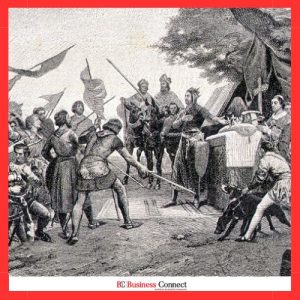
The Anglo-French Wars, spanning an astonishing 706 years from 1109 CE to Napoleon’s second defeat in 1815, were marked by a series of conflicts primarily centered around the struggle for control over French territories. Key battles such as Agincourt, Crecy, and Waterloo defined the narrative of these prolonged struggles. Notably, the deployment of British Longbowmen, renowned for their mastery of heavy yew longbows from a tender age, proved pivotal in many early engagements.
Beyond Europe, the repercussions of the Anglo-French Wars reverberated globally, contributing significantly to the formation of independent colonies overseas. France’s support during the American Revolution of 1775 exemplifies this broader impact.
Interestingly, despite the frequency of conflicts, periods of peace punctuated the timeline of the Anglo-French Wars. This sporadic nature reflects the dynamic geopolitical landscape of the time, where tensions oscillated between war and peace within relatively short spans. Such fluctuations highlight the complexity and volatility of international relations during this era, where alliances shifted, and diplomatic circumstances evolved rapidly. Ultimately, the Anglo-French Wars left an enduring legacy, shaping not only the histories of England and France but also influencing the trajectory of colonialism and global politics.
Roman-Persian Wars – 681 Years
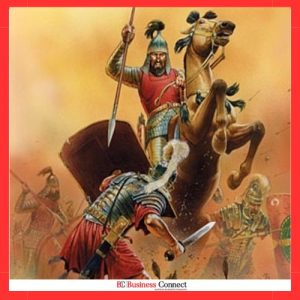
The Roman–Persian Wars, spanning from the mid-1st century BCE to 628 CE, constituted a monumental 681-year conflict between two ancient giants. Originating from a failed alliance negotiation, the wars witnessed Roman general Marcus Crassus invading Mesopotamia in 53 BCE. Throughout this extensive conflict, both sides achieved significant victories. Ultimately, Eastern Roman Emperor Heraclius, with assistance from his brother Theodore, delivered decisive blows to the Persian Empire, compelling their ruler to seek peace.
This prolonged struggle not only featured notable military engagements but also spurred technological innovations that influenced global military tactics for centuries. Today, the Roman–Persian Wars stand as one of history’s lengthiest and most impactful conflicts, shaping military strategy and leaving an enduring legacy.
In parallel, the conflicts between Roman and Iranian empires in the form of Parthian and Sasanian, lasting over seven centuries, concluded with the rise of the early Muslim conquests. These conquests reshaped the political landscape, leading to the downfall of the Sasanian Empire and substantial losses for Byzantium, as Muslim rule extended over former Roman and Persian territories.
Byzantine-Bulgarian Wars – 675 Years

The Byzantine–Bulgarian Wars spanned 675 years, pitting the Eastern Roman (Byzantine) Empire against Bulgaria. Originating in 680 CE, when Khan Asparuh led the Bulgars across the Danube, the conflict intensified as both empires vied for supremacy in the Balkans. Despite occasional peace treaties, tensions persisted, with significant clashes under Tsars Simeon and Ivan Alexander. Bulgaria’s victory in 1355 CE marked a turning point, but the Ottoman conquest in 1393 signaled the demise of both empires. Throughout the wars, periods of stability alternated with bursts of conflict, shaping the geopolitical landscape of the region.
The series of conflicts underscored the strategic importance of the Balkans and the complex interplay between Byzantine and Bulgarian ambitions. Despite their eventual downfall, the Byzantine–Bulgarian Wars left a lasting legacy, influencing subsequent events in Southeastern Europe and shaping the historical narratives of both empires.
Crusades – 604 Years
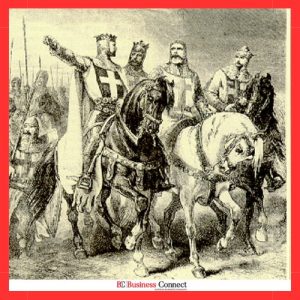
The Crusades, a series of religious wars from 1095 to 1699, were sanctioned by the Latin Church to reclaim Jerusalem and other Holy Land sites from Muslim control. Initiated by Pope Urban II in 1095, the First Crusade succeeded in capturing Jerusalem in 1099, driven by promises of spiritual salvation and earthly rewards. Subsequent crusades aimed to defend and expand Christian territories in the Levant but achieved mixed results. The Fourth Crusade infamously diverted to sack Constantinople, weakening the Byzantine Empire.
Crusader states like the Kingdom of Jerusalem emerged, defended by military orders such as the Knights Templar. Despite challenges from internal conflicts, resource shortages, and formidable Muslim leaders like Saladin, the Crusades had lasting consequences. They triggered political, economic, and cultural shifts in Europe and the Middle East, fostering religious intolerance and influencing power dynamics.
Advancements in trade and military organization resulted from these expeditions, leaving an indelible mark on medieval and early modern history. The often misunderstood history of the Crusades has contributed to an inaccurate perception that they ended earlier than they did, disregarding over 604 years of war, disruption, and unrest, and their religious tensions continue to influence the present day.
Arab-Byzantine Wars – 421 Years

The Arab-Byzantine Wars, spanning over four centuries until 1050 CE, marked a complex and enduring conflict between the Muslim Arab dynasties and the Byzantine Empire. Commencing in 629 CE when Muhammad opposed the Byzantine Empire, Arab forces rapidly conquered territories, including the Levant, Egypt, and Persia, inflicting losses on the Byzantines. However, the Byzantine Empire experienced a resurgence in the 10th century, aided by European support during the Crusades, ultimately reclaiming dominance by the 1100s.
The conflicts were multifaceted, rooted in economic, geopolitical, and religious factors. The Byzantines initially adopted defensive strategies, avoiding open battles and retreating to fortified strongholds, but after 740, they began launching counter-raids. Concurrently, the Arabs extended their reach through sea raids, reaching as far as France and Constantinople.
Normalization of relations occurred under the Abbasid Empire, yet conflict persisted with annual raids. The decline of the Abbasid state and the Byzantine resurgence under the Macedonian dynasty shifted the balance. Over fifty years, the Byzantines regained control of northern Syria and Greater Armenia. The wars concluded with the emergence of the Seljuk Turks in the 1050s, marking the end of the Arab-Byzantine Wars. The consequences of this prolonged conflict reverberated through the historical landscape, shaping Europe and the Middle East and leaving an enduring legacy of historical enmity.
Yemeni-Ottoman Conflicts – 373 Years

The Yemeni–Ottoman conflicts, spanning from 1538 to 1911 CE, encapsulate a complex and protracted history of battles between the Ottoman Empire and various factions in Yemen. Motivated by the Ottoman desire to expand imperial rule in the Arabian Peninsula, these conflicts were marked by military campaigns led by Ottoman governors like Selim II and Suleiman I. Diplomatic negotiations often gave way to military engagements, leading to territorial gains for the Ottomans and significant impacts on Yemeni culture and history.
Over the centuries, the Ottomans faced resistance from local rulers, and the conflicts left both sides with substantial losses in terms of men and resources. The wars persisted for 373 years until 1911 when the signing of the Treaty of Daan granted autonomy to Yemen under Ottoman suzerainty. This agreement marked the end of direct hostilities but maintained a relationship until World War I, which eventually led to the establishment of the Mutawakkilite Kingdom of Yemen in 1918. The Yemeni–Ottoman conflicts left an indelible mark on the region’s geopolitical landscape and contributed to shaping the historical trajectory of Yemen.
Moroccan-Portuguese Conflicts – 354 Years
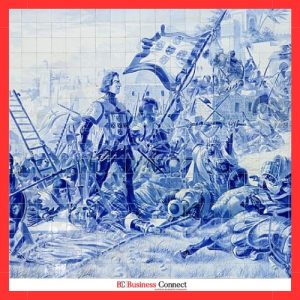
The Moroccan–Portuguese conflicts, spanning from 1415 to 1769 CE, were characterized by a series of wars and skirmishes between the Portuguese Empire and the Kingdoms of Morocco. Initiated by Portugal’s aim to gain control over Moroccan territories for naval supremacy in the Western Mediterranean, the conflicts began with the seizure of Ceuta in 1415. Despite initial successes by the Portuguese, including the conquest of Alcácer-Ceguer, Arzila, and Tangier, the Moroccans, under various Sultans like Abd al-Malik, fought back fiercely.
The Battle of AlcácerQuibir in 1578 marked a significant turning point, resulting in the death of King Sebastian of Portugal and a Portuguese loss against Moroccan forces. Over time, Portugal gradually lost many of its footholds in Morocco, including Safi, Azamor, and Agadir, due to the Saadi Sultan’s offensives.
In 1661, Tangier was relinquished to England, and in 1668, Ceuta was transferred to Spain, signaling the conclusion of Portugal’s direct engagements in Morocco. The evacuation of Mazagan in 1769 marked the final chapter, driven by pressure from the ‘Alawite Sultan Mohammed ben Abdallah, thus bringing an end to the conflicts and Portugal’s active presence in the region.
Despite the tensions, Morocco and Portugal signed a Peace and Friendship Agreement in 1774, marking the end of hostilities and establishing one of the oldest bilateral agreements between the two nations. The conflicts left a lasting impact on the region’s history and shaped diplomatic relations for years to come.
Russo-Turkish Wars – 350 Years

The Russo-Turkish wars, spanning from 1568 to 1918 CE, encompassed 12 conflicts between the Russian and Ottoman Empires. Rooted in disputes over religious sites, access to the Black Sea, and territorial ambitions, these wars marked significant chapters in European and Middle Eastern history. The initial clashes emerged in 1569 when the Ottoman Sultan Selim II aimed to expel Russians from the lower Volga, culminating in the Astrakhan expedition. Subsequent conflicts revolved around Crimea, a region that changed hands until Russia’s annexation in 1783.
In 1828, tensions escalated as Russia declared war on the Ottoman Empire, initially sparked by Greece’s independence movement. This conflict expanded into Romania and Bulgaria, leading to substantial territorial gains for Russia. Amid World War I, Russia allied with Britain against Germany and the Ottomans, achieving a pivotal victory culminating in the Treaty of Brest-Litovsk in 1918. The treaty marked the official end to hostilities, solidifying Russia’s gains and reshaping the geopolitical landscape of Eastern Europe and the Middle East.
Throughout these wars, religious, economic, and strategic interests intersected, shaping the destinies of empires and nations. The Russo-Turkish conflicts underscored the complex power dynamics and rivalries that defined European and Middle Eastern politics for centuries.
Conclusion:
Collectively spanning centuries and continents, the ten longest battles in history bear witness to the relentless and varied nature of human conflict. From ancient sieges to modern warfare, these prolonged struggles have shaped the course of nations and defined the sacrifices made in the pursuit of victory. Each battle, marked by its own unique challenges, underscores the enduring human spirit amidst the chaos of war, leaving an indelible imprint on the pages of history.


